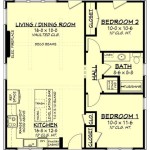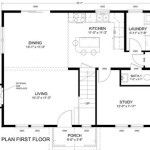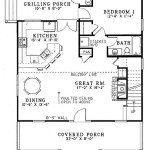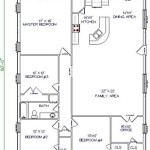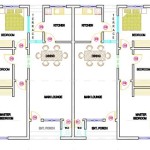His And Hers Closet Floor Plan: Designing for Harmony and Functionality
The concept of a "his and hers" closet floor plan represents a significant shift in personal space organization, moving beyond the traditional single closet shared by two individuals. Instead, it focuses on providing each person with dedicated and personalized closet space, tailored to their specific wardrobe needs, storage preferences, and lifestyle. This approach aims to minimize clutter, reduce conflicts over space, and streamline the process of getting ready each day. The design process involves careful consideration of available space, individual needs, and the overall aesthetic of the bedroom or dressing area.
Successfully implementing a his and hers closet floor plan requires meticulous planning and attention to detail. It’s more than simply dividing an existing closet in half. It's about creating two distinct yet complementary spaces that optimize functionality and reflect the individual styles of the occupants. This article explores the key considerations and strategies involved in designing an effective his and hers closet floor plan, ensuring a harmonious and organized living environment.
Key Considerations Before Planning
Before diving into the specifics of the closet design, several crucial factors must be addressed to ensure the final product meets the needs of both individuals. These initial considerations form the foundation upon which the entire closet plan is built.
Space Assessment: The first step involves a thorough assessment of the available space. This includes not only the overall dimensions of the closet area but also the height, width, and depth of any existing alcoves, corners, or structural elements. Accurate measurements are essential to avoid design errors and ensure that chosen components fit correctly. Consider whether the space is a walk-in closet, a reach-in closet, or a section of a larger room designated for closet space. The type of space dramatically impacts the possible floor plan options.
Individual Needs Analysis: Understanding the specific storage needs of each individual is paramount. This requires an honest evaluation of their wardrobe contents, including the types of clothing they own (e.g., suits, dresses, casual wear), the quantity of shoes and accessories, and any specialized storage requirements (e.g., formal wear, seasonal items). Consider factors such as the length of hanging garments (requiring different rod heights), the preferred methods of folding clothes (affecting shelf dimensions), and the need for drawer space for smaller items. This analysis should also factor in future wardrobe growth.
Lifestyle Considerations: A well-designed closet should seamlessly integrate into the individuals' lifestyles. For example, a professional who wears suits frequently might require ample hanging space and specialized tie or belt racks. An individual with a large shoe collection will need dedicated shoe storage solutions. Consider the daily routines of each person and how the closet can best facilitate their needs, making it easier to locate items and get ready efficiently. Furthermore, consider accessibility. Will the design accommodate potential future needs, such as aging in place or mobility limitations.
Designing the Floor Plan: Layout and Organization
With a clear understanding of the available space and individual needs, the next step involves designing the actual floor plan, focusing on layout and organization. This is where the concept of "his and hers" truly takes shape, with separate zones tailored to each person's requirements.
Division of Space: The core principle of a his and hers closet is the equitable and functional division of space. This division may be symmetrical or asymmetrical, depending on individual needs and the overall space configuration. For instance, if one person owns significantly more clothing than the other, their section of the closet might be larger. The division should be visually clear, perhaps using different finishes or organizational systems to delineate each side. Mark the boundaries clearly and consider any shared zones for items used by both individuals.
Storage Solutions: Implementing effective storage solutions is crucial for maximizing space and maintaining organization. This involves incorporating a combination of hanging rods, shelves, drawers, and specialized organizers to accommodate different types of clothing and accessories. Hanging rods can be single or double-tiered, depending on the length of garments and available height. Shelves can be adjustable to accommodate varying sizes of folded items. Drawers are ideal for storing smaller items such as underwear, socks, and accessories. Specialized organizers, such as tie racks, belt racks, shoe shelves, and jewelry organizers, can further enhance organization and accessibility. Consider pull-out shelves or drawers to maximize space in deep or hard-to-reach areas.
Accessibility and Ergonomics: The design should prioritize accessibility and ergonomics to ensure that all items are easily reachable and usable. This includes positioning hanging rods and shelves at appropriate heights, ensuring adequate aisle space for movement within the closet, and incorporating features such as pull-down rods or adjustable shelves to accommodate individuals of different heights. Consider the height of shelves and drawers relative to the person using them. A good closet design minimizes bending and reaching, reducing strain and making it easier to access items on a daily basis.
Enhancing Functionality and Aesthetics
Beyond the basic layout and organization, there are several ways to enhance the functionality and aesthetics of a his and hers closet floor plan, transforming it from a simple storage space into a personalized and enjoyable part of the home.
Lighting: Proper lighting is essential for visibility and aesthetics. Insufficient lighting can make it difficult to locate items and can detract from the overall appearance of the closet. Consider incorporating a combination of ambient, task, and accent lighting to create a well-lit and visually appealing space. Ambient lighting provides overall illumination, while task lighting focuses on specific areas such as hanging rods or shelves. Accent lighting can highlight decorative elements or create a sense of depth. LED lighting is a popular choice due to its energy efficiency and long lifespan. Ensure the lighting chosen reflects the colors of clothes accurately.
Mirrors: Mirrors are not only functional but also contribute to the overall aesthetic of the closet. A full-length mirror is essential for checking outfits, while smaller mirrors can be used for grooming or applying makeup. Mirrors also create the illusion of more space, making the closet feel larger and more open. Consider incorporating mirrors into closet doors, walls, or as standalone features. Ensure there is adequate lighting around the mirror for accurate reflection.
Finishes and Materials: The choice of finishes and materials can significantly impact the look and feel of the closet. Consider using complementary colors and textures to create a cohesive and visually appealing space. Wood finishes, such as maple, oak, or walnut, can add warmth and sophistication, while painted finishes can provide a clean and modern look. Consider the durability and maintenance requirements of different materials. For example, laminate surfaces are easy to clean and resistant to scratches, while solid wood requires more care. Hardware, such as handles and knobs, should also be chosen carefully to complement the overall design. Consider using eco-friendly and sustainable materials whenever possible.
Personalization: Personalizing the closet with individual touches can make it feel more like a personal retreat. This can involve incorporating decorative elements such as artwork, photographs, or plants. Adding personal storage solutions, such as jewelry boxes or valet trays, can also enhance the functionality and aesthetics of the space. Consider adding a comfortable chair or ottoman for relaxation. Personalization should reflect the individual tastes and preferences of each person, creating a space that is both functional and enjoyable.
Designing a his and hers closet floor plan is a multifaceted process that requires careful consideration of space, individual needs, and aesthetic preferences. By following a systematic approach and paying attention to detail, it is possible to create a harmonious and organized living environment that enhances both functionality and style. A well-designed his and hers closet is an investment in personal well-being and can significantly improve the daily routine.

Four Bedrooms With His And Her S Walk In Closets 9381el Architectural Designs House Plans

Plan 55137br His And Her Bathrooms Luxury House Plans Floor

Traditional Country House Plan With Two Walk In Closet The Master Suite 69352am Architectural Designs Plans

House Design With A Bath For Both Of You 4740

House Plans With His And Her Bathrooms Closets

His And Hers Closets Are Lifesavers Sater Design Collection

Walk In Closet Size Designs For Floor Plans Layout Dimensions

3 Bedroom Bungalow Craftsman House Plan 1969

Home Plan Covington Sater Design Collection

Emery House Plan Sater Design Collection

